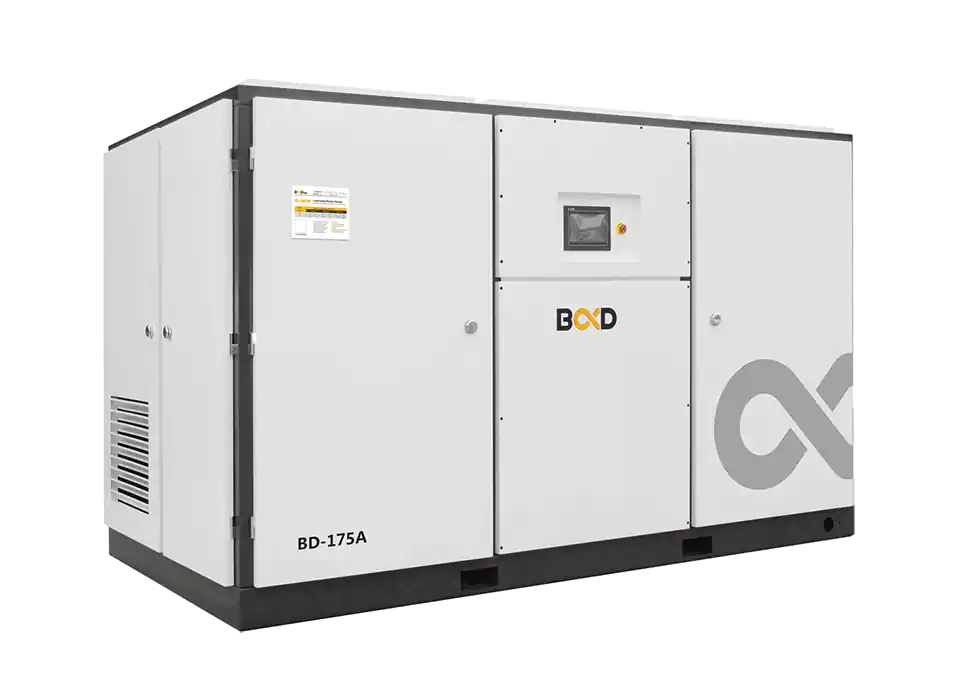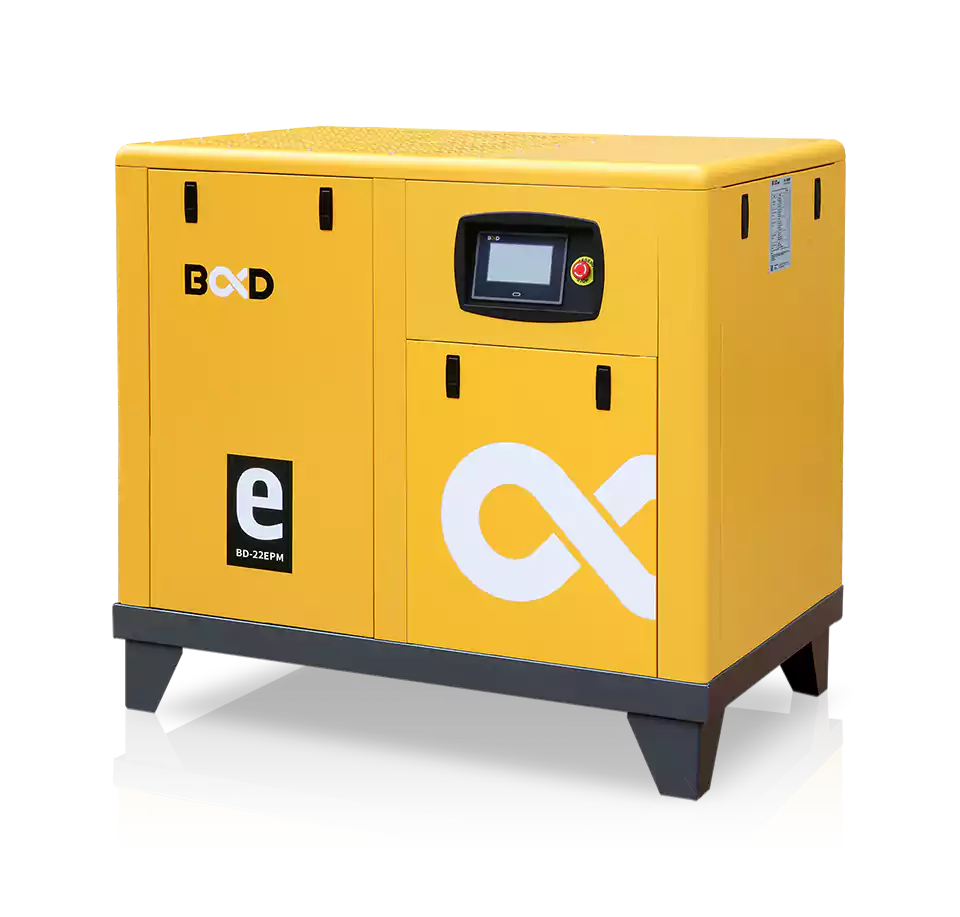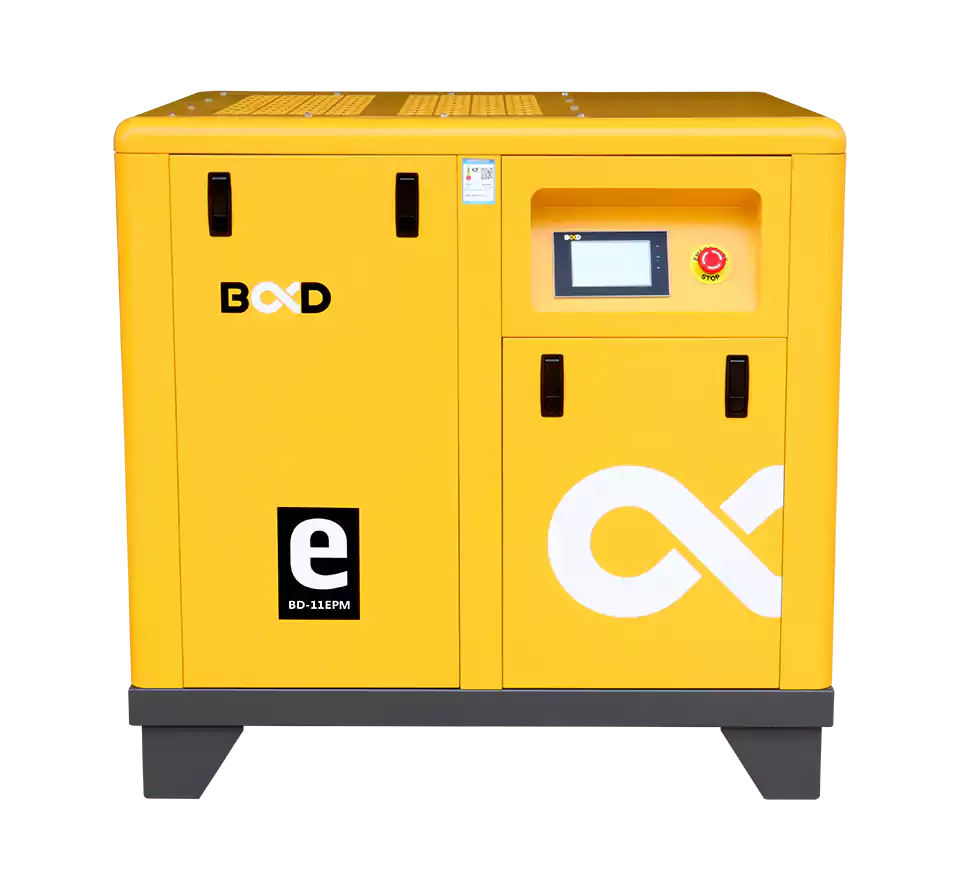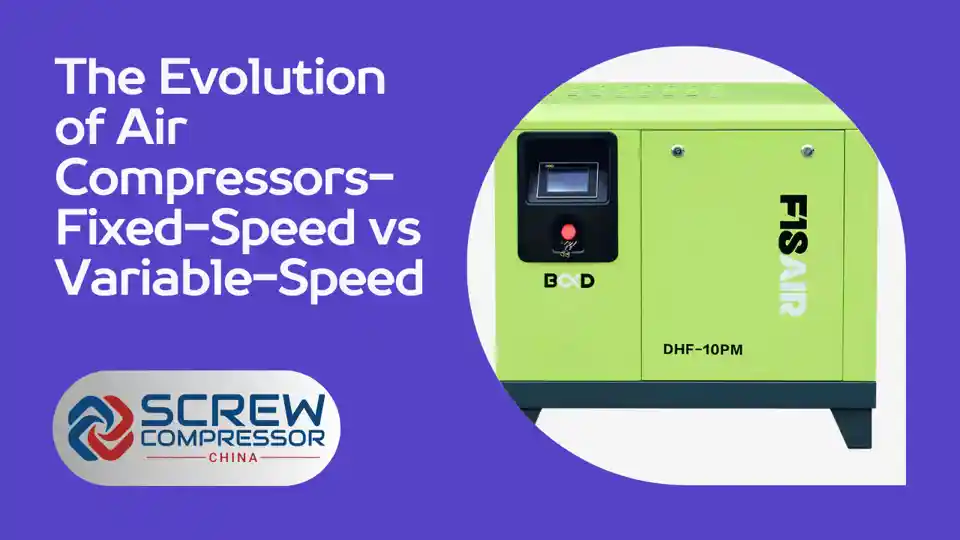Air compressors are critical in various industries, driving numerous processes by supplying compressed air. However, the choice between fixed-speed and variable-speed air compressors can significantly impact both performance and operational costs.
This article explores the differences between these two types of compressors, helping you decide which one best suits your needs.
Understanding Fixed-Speed Air Compressors
What is a Fixed-Speed Air Compressor?
Fixed-speed air compressors operate at a constant speed, providing a steady flow of compressed air. This consistency makes them ideal for applications that demand a continuous air supply.
Discover more about fixed-speed units in this detailed overview by C&B Equipment.
Fixed-speed compressors are the traditional choice for many industrial applications. They are designed to run at a constant motor speed, typically 1800 or 3600 RPM, regardless of the air demand.
When the pressure in the air receiver tank drops below a preset level, the compressor kicks on and runs at full speed until the tank pressure reaches the upper limit. This simple on/off control makes fixed-speed compressors relatively easy to operate and maintain.

Benefits of Fixed-Speed Compressors
- Cost-Effective: Generally less expensive upfront compared to variable-speed models.
- Simplicity: Easier to maintain due to fewer moving parts.
- Reliability: Proven technology with a long history of dependable performance.
- Suitability: Ideal for applications with constant air demand, such as continuous manufacturing processes.
However, fixed-speed compressors have some drawbacks. They can be less energy-efficient, especially in applications with fluctuating air demand.
When the compressor is running, it always operates at full capacity, even if the air requirement is lower. This can lead to wasted energy and increased wear on the compressor components.
Exploring Variable-Speed Air Compressors
What is a Variable-Speed Drive (VSD) Air Compressor?
Variable-speed drive (VSD) air compressors adjust their motor speed according to the air demand, enhancing energy efficiency. This adaptability makes them suitable for varying operational needs.
Learn about the energy efficiency of VSD compressors at Atlas Copco.
VSD compressors use a variable frequency drive (VFD) to control the speed of the motor. The VFD adjusts the frequency and voltage supplied to the motor, allowing it to run at different speeds.
As the air demand changes, the VSD compressor can ramp up or down its motor speed to match the required output. This dynamic adjustment helps maintain a stable system pressure while minimizing energy consumption.

Benefits of Variable-Speed Compressors
- Energy Savings: Reduces power consumption by aligning output with demand.
- Operational Flexibility: Adjusts to changes in air use, avoiding unnecessary energy use.
- Soft Starting: Gradual motor acceleration reduces mechanical stress and electrical surge.
- Precise Pressure Control: Maintains a narrow pressure band, improving system stability.
- Reduced Wear: Fewer start/stop cycles and lower average motor speeds extend component life.
VSD compressors excel in applications with variable air demand, such as facilities with multiple shifts, seasonal production changes, or frequent load/unload cycles.
By closely matching the air supply to the actual demand, VSD compressors can achieve significant energy savings, often in the range of 30-50% compared to fixed-speed models.
Comparing Performance and Efficiency
Operational Efficiency
Variable-speed compressors are often more energy-efficient, especially in fluctuating demand conditions. They can significantly reduce energy costs by matching output with demand.
For an in-depth comparison, visit Kaishan USA.
The efficiency advantage of VSD compressors is most pronounced in applications with highly variable air demand. In these scenarios, fixed-speed compressors will cycle between load and unload states, wasting energy during unloaded periods.
VSD compressors, on the other hand, can precisely match their output to the demand, minimizing unloaded operation and saving energy.
However, it’s important to note that VSD compressors may not always be the most efficient choice. In applications with relatively constant air demand, a properly sized fixed-speed compressor can operate at its optimal efficiency point, potentially outperforming a VSD model.
It’s crucial to analyze your facility’s air demand profile to determine which type of compressor will deliver the best efficiency for your specific needs.
Cost Implications
While variable-speed compressors might have higher initial costs, their operational savings can quickly offset the initial investment, making them a cost-effective choice over time.
The upfront cost of a VSD compressor is typically higher than a comparable fixed-speed model due to the added complexity of the variable frequency drive and control system. However, the energy savings achieved by a VSD compressor can provide a rapid return on investment (ROI), often within 1-3 years, depending on the application and energy costs.

In addition to energy savings, VSD compressors can also reduce maintenance costs. The soft starting and variable speed operation reduce mechanical stress on the motor and compressor components, extending their service life. This can lead to lower repair and replacement costs over the life of the compressor.
Suitability for Different Applications
Fixed-speed compressors are best for applications with a constant air demand, whereas variable-speed compressors offer flexibility and efficiency in environments where air demand varies.
When selecting between a fixed-speed and variable-speed compressor, consider the following factors:
- Air Demand Profile: Analyze your facility’s air demand patterns. If the demand is relatively constant, a fixed-speed compressor may be sufficient. If the demand fluctuates significantly, a VSD compressor will likely provide better efficiency and performance.
- Energy Costs: Evaluate your energy rates and the potential savings offered by a VSD compressor. Higher energy costs will make the efficiency gains of a VSD more valuable.
- Capital Budget: Consider your upfront budget for the compressor purchase. While VSD compressors have a higher initial cost, their long-term energy savings can justify the investment.
- Maintenance Resources: Assess your facility’s maintenance capabilities. VSD compressors may require more specialized knowledge for troubleshooting and repair, while fixed-speed compressors are generally simpler to maintain.
By carefully evaluating these factors and consulting with compressed air professionals, you can select the compressor type that best fits your application, energy efficiency goals, and budget constraints.
Frequently Asked Questions
Q: What is the main advantage of a variable-speed air compressor?
A: The main advantage is energy efficiency, as it adjusts the motor speed to the actual air demand, reducing energy consumption.
Q: Can a fixed-speed compressor handle variable air demands?
A: While it can handle variable demands, it is less efficient as it operates at a constant speed, leading to higher energy consumption during lower demand periods.
Q: Are variable-speed compressors more expensive than fixed-speed?
A: Yes, they are generally more expensive initially but can lead to significant savings in energy costs.
Q: How do I determine which type of compressor is best for my application?
A: Analyze your air demand profile, energy costs, capital budget, and maintenance resources. Consult with compressed air professionals to select the most suitable compressor for your specific needs.
Q: Can variable-speed compressors reduce maintenance costs?
A: Yes, the soft starting and variable speed operation reduce mechanical stress on components, extending their service life and potentially lowering maintenance costs over time.
Conclusion
Choosing between a fixed-speed and variable-speed air compressor depends largely on your specific air demand patterns. While fixed-speed compressors offer simplicity and cost-effectiveness for constant demands, variable-speed compressors provide significant energy savings and adaptability for fluctuating needs.
For more insights into choosing the right compressor for your needs, explore Fluid-Aire Dynamics.
By understanding the unique characteristics and benefits of each compressor type, you can make an informed decision that optimizes your compressed air system’s performance, energy efficiency, and long-term cost-effectiveness. Whether you opt for the tried-and-true reliability of a fixed-speed compressor or the advanced energy-saving capabilities of a variable-speed model, selecting the right compressor is key to ensuring a dependable and efficient compressed air supply for your industrial operations.
Meta Description: Explore the differences between fixed-speed and variable-speed air compressors. Learn which compressor type offers better efficiency and cost-effectiveness for your specific industrial needs.
